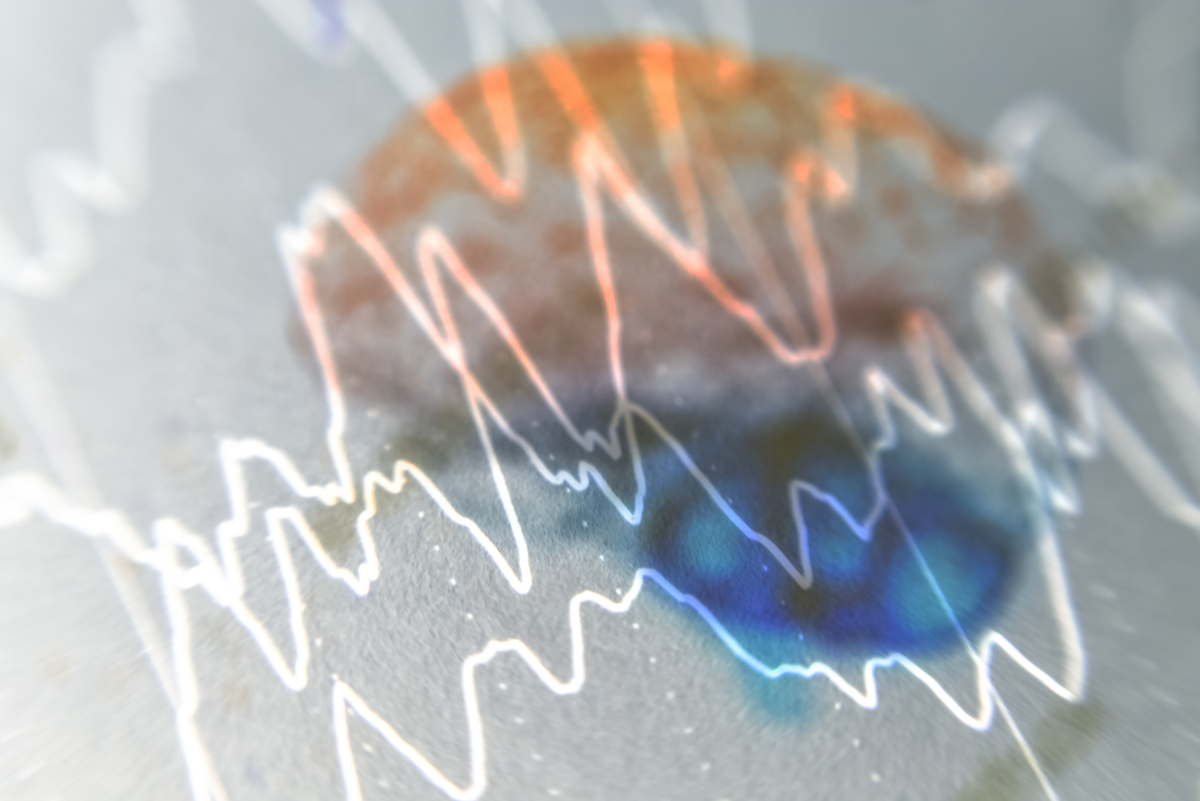Migraines: energy shortages in the brain?
The world of migraine research has been buzzing for decades, and it’s showing no signs of slowing down. There’s a lot we still don’t know about migraine. Old beliefs need to be corrected and new explanations found. These efforts serve one aim: to help people cope with the challenges of living with migraine.
-
References
Del Moro L, Rota E, Pirovano E, Rainero I. Migraine, Brain Glucose Metabolism and the "Neuroenergetic" Hypothesis: A Scoping Review. J Pain. 2022 Aug;23(8):1294-1317. doi: 10.1016/j.jpain.2022.02.006. Epub 2022 Mar 14. PMID: 35296423.
Duffner K. Energiemangel im Gehirn – ein Schlüssel zur Migräne? Ars Medici 2007; 14: 683-685
Gantenbein AR, Sandor PS, Fritschy J, Turner R, Goadsby PJ, Kaube H. Sensory information processing may be neuroenergetically more demanding in migraine patients. Neuroreport. 2013 Mar 6;24(4):202-5. doi: 10.1097/WNR.0b013e32835eba81. PMID: 23381352.
Gormley P, Anttila V, Winsvold BS, Palta P, Esko T, et al. Meta-analysis of 375,000 individuals identifies 38 susceptibility loci for migraine. Nat Genet. 2016 Aug;48(8):856-66. doi: 10.1038/ng.3598. Epub 2016 Jun 20. Erratum in: Nat Genet. 2016 Sep 28;48(10 ):1296. PMID: 27322543; PMCID: PMC5331903.
Klopstock T, Priglinger C, Yilmaz A, Kornblum C, Distelmaier F, Prokisch H: Mitochondrial disorders. Dtsch Ärztebl Int 2021; 118: 741–8. DOI: 10.3238/arztebl.m2021.0251.
Oka F, Lee JH, Yuzawa I, Li M, von Bornstaedt D, Eikermann-Haerter K, Qin T, Chung DY, Sadeghian H, Seidel JL, Imai T, Vuralli D, Platt RM, Nelson MT, Joutel A, Sakadzic S, Ayata C. CADASIL mutations sensitize the brain to ischemia via spreading depolarizations and abnormal extracellular potassium homeostasis. J Clin Invest. 2022 Apr 15;132(8):e149759. doi: 10.1172/JCI149759.
Sacconi S, Trevisson E, Salviati L, Aymé S, Rigal O, Redondo AG, Mancuso M, Siciliano G, Tonin P, Angelini C, Auré K, Lombès A, Desnuelle C. Coenzyme Q10 is frequently reduced in muscle of patients with mitochondrial myopathy. Neuromuscul Disord. 2010 Jan;20(1):44-8. doi: 10.1016/j.nmd.2009.10.014. Epub 2009 Nov 27. PMID: 19945282.
Sagan L. On the origin of mitosing cells. J Theor Biol. 1967 Mar;14(3):255-74. doi: 10.1016/0022-5193(67)90079-3. PMID: 11541392.
Sangiorgi S, Mochi M, Riva R, Cortelli P, Monari L, Pierangeli G, Montagna P. Abnormal platelet mitochondrial function in patients affected by migraine with and without aura. Cephalalgia. 1994 Feb;14(1):21-3. doi: 10.1046/j.1468-2982.1994.1401021.x. PMID: 8200018.
Skinhoj E. Hemodynamic studies within the brain during migraine. Arch Neurol. 1973 Aug;29(2):95-8. doi: 10.1001/archneur.1973.00490260039007. PMID: 4717726.
Sparaco M, Feleppa M, Lipton RB, Rapoport AM, Bigal ME. Mitochondrial dysfunction and migraine: evidence and hypotheses. Cephalalgia. 2006 Apr;26(4):361-72. doi: 10.1111/j.1468-2982.2005.01059.x. PMID: 16556237.
Terrin A, Bello L, Valentino ML, Caporali L, Sorarù G, Carelli V, Maggioni F, Zeviani M, Pegoraro E. The relevance of migraine in the clinical spectrum of mitochondrial disorders. Sci Rep. 2022 Mar 10;12(1):4222. doi: 10.1038/s41598-022-08206-z. PMID: 35273322; PMCID: PMC8913605.
Tiehuis LH, Koene S, Saris CGJ, Janssen MCH. Mitochondrial migraine; a prevalence, impact and treatment efficacy cohort study. Mitochondrion. 2020 Jul;53:128-132. doi: 10.1016/j.mito.2020.05.004. Epub 2020 May 25. PMID: 32464279.
Yorns WR Jr, Hardison HH. Mitochondrial dysfunction in migraine. Semin Pediatr Neurol. 2013 Sep;20(3):188-93. doi: 10.1016/j.spen.2013.09.002. PMID: 24331360.
Internet:
https://schmerzklinik.de/kann-die-ernaehrung-bei-migraene-eigentlich-auch-zur-therapie-werden/
abgerufen am 2.5.2024






















